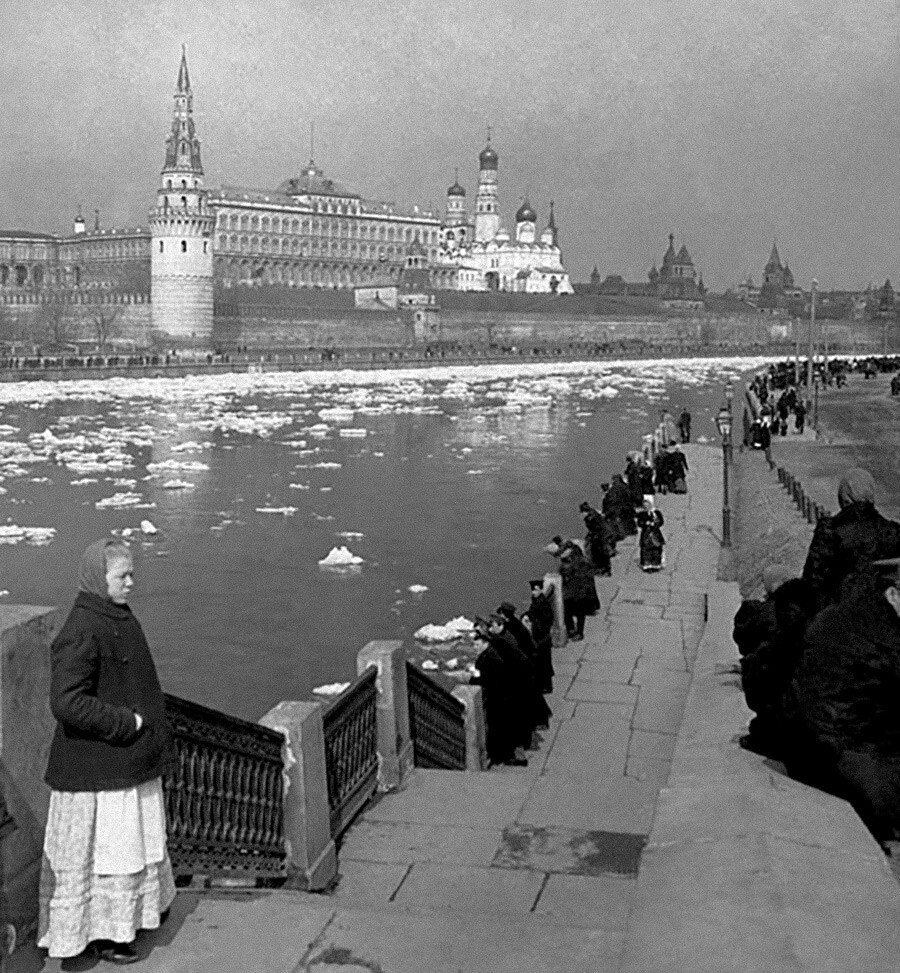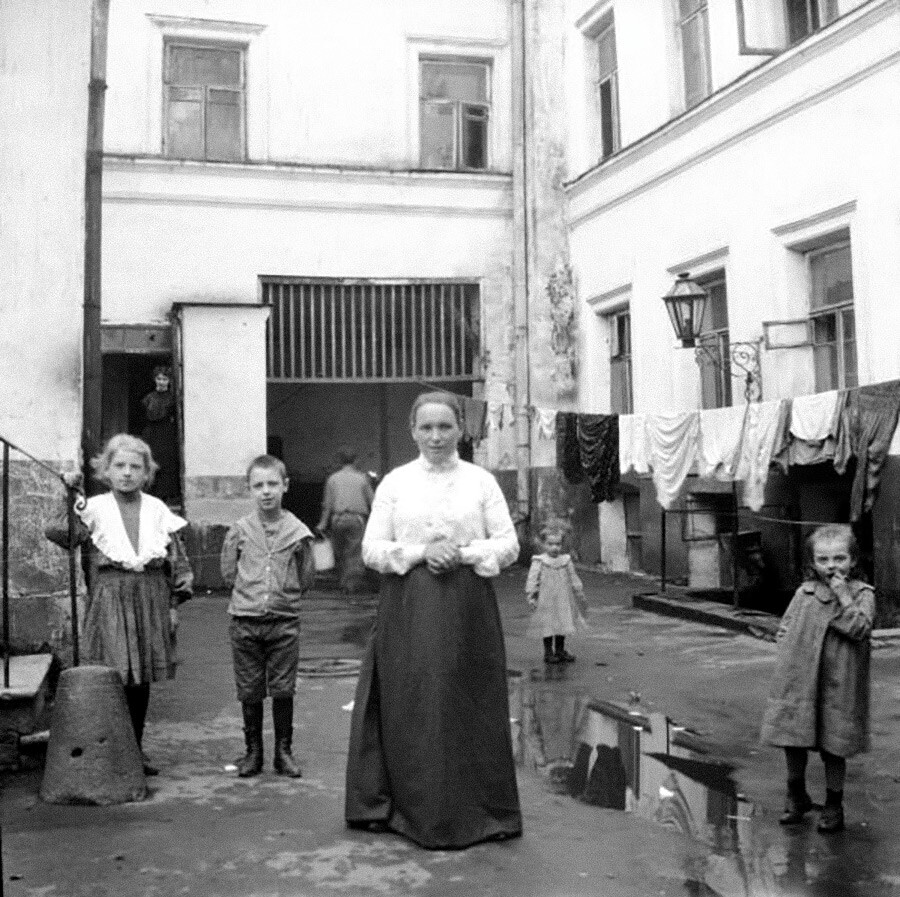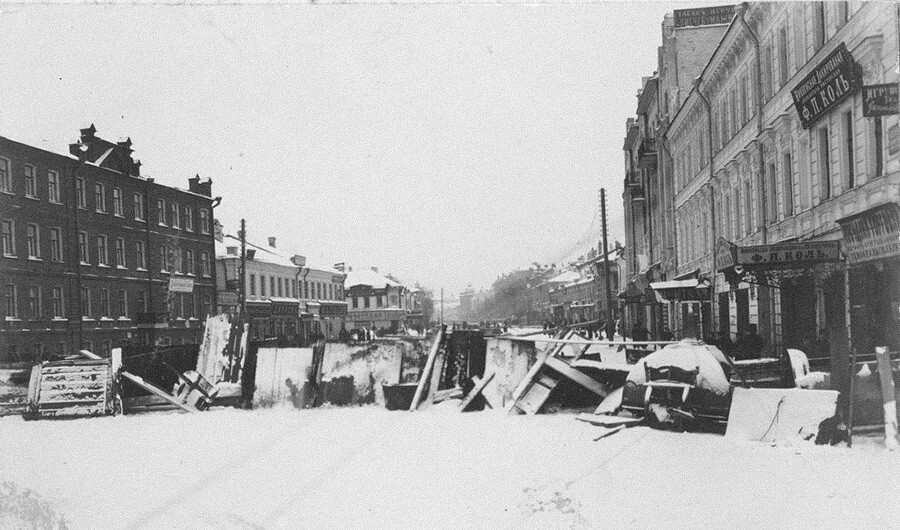
What Moscow looked like in the early 20th century (PHOTOS)

We already showed you what Moscow looked like at the end of the 19th century. Let’s continue our time travel around the city, focusing on the start of the 20th century to 1917.
The first tram line opened in 1899, from Butyrskaya zastava (as is written on the tram in the photo). But horse-drawn railways prevented the development of tram lines, so the first decade of the 20th century was dedicated to removing the horse-drawn railway and laying tram rails (in the same place).

People watch an ice drift on the Moskva River.

Today, when we say “Moscow University”, the first association to pop up is its main building – a Stalin-era high-rise on the Sparrow Hills. However, until the middle of the 20th century this building in the city center was simply called “Moscow University.”

A tourist can’t enjoy this view of the Kremlin anymore. Many of the buildings are now gone – including the ornate white St. Catherine Church of Ascension Convent and the whole architectural ensemble of the monument to Emperor Alexander II.

Let’s take a closer look at this monument (from the parade side).

Adjacent to the Kremlin was an ancient district called Zaryadye; it was densely packed with small buildings and narrow streets. During Soviet times the entire district was demolished and eventually replaced by the giant Rossiya Hotel. Karma caught up with the hotel, however, and it too was demolished in 2006. Today, the modern Zaryadye Park occupies its place.

In 1908, Moscow suffered a devastating flood. One could get around the city only like this! In this photo – we see Mokrinsky alley in Zaryadye, which doesn’t exist anymore.

Even the Kremlin walls were flooded in 1908.

During Soviet times almost the entire Kitaygorodskaya wall, which surrounded the city center, was torn down. Today, only small fragments of it remain. This “Katushka” tower, for example, exists now only in photos. (As does the horse-drawn tram on the right).

This is the Chudov Monastery on the territory of the Kremlin, which was I demolished during the Soviet era.

One of the most beautiful buildings in Moscow – luckily – was left unharmed. At the beginning of the 20th century the Pashkov House was home to the Rumyantsev Library, which became the foundation of the Lenin Library, which is now known as the Russian State Library. Today, this building still belongs to the main library of the country.

Nikolskaya Street is now for pedestrians only. In the Soviet era the white Neo-Gothic Nikolskaya Tower of the Kremlin (on the left) was repainted red; the Kazan Church (on the right) began to look completely different after its reconstruction in the 1920s. In the middle is the State Historical Museum, built at the end of the 19th century.

It’s hard to believe now, but right until 1930 there was a tram on Red Square.

Here’s a more general view of Red Square. Today, of course, there’s no carriages or trams on it; the Mausoleum appeared, as did tourists.

Let’s shift away from parade views to a typical Moscow yard. Today, one can’t see the lines of drying laundry or the yard itself (almost all are closed for trespassers and serve as a parking lot).

Kuznetsky Most Street still has as many shops, stores and pubs, but now the street is pedestrian.

There’s another lively outdoor shopping area – the Sukharevsky market. In the background we see the building of the Sukharev Tower, destroyed in Soviet times.

The Theater Square before the Bolshoi Theater changed to the view below. Here’s a photo from the beginning of the century.

And here’s a 1910 photo. A tram line was laid and behind it we see the Muir and Merrylees department store that was founded by two Scottish immigrants of the same last names and which opened in 1908; today it’s known as TsUM.

Rare photos – barricades in Moscow. In 1905, the first Russian revolution happened, and Moscow witnessed a major uprising.

In 1912, the Alexander III Fine Arts Museum opened in Moscow, which is now known as the Pushkin State Museum of Fine Arts.

Nicholas II was also present at the opening.

In 1913, Moscow had a grand celebration to mark the 300th anniversary of the Romanov Dynasty’s rule over Russia.

The entire city was lavishly decorated; it hosted many popular festive activities. The building of the Assembly of the Nobility is in the photo below, which during Soviet times turned into the House of the Unions.

Here, for example, a crowd assembled near the Triumphal Arch on Tverskaya Zastava Square. This arch was dedicated to the victory in the Patriotic War of 1812 over Napoleon. In the 1930s it was dismantled, but later a copy of it was erected on Kutuzovsky Avenue.

Very soon after, in 1917, there were no longer ceremonial processions but revolutionary columns of protesters marching through this Arch.













